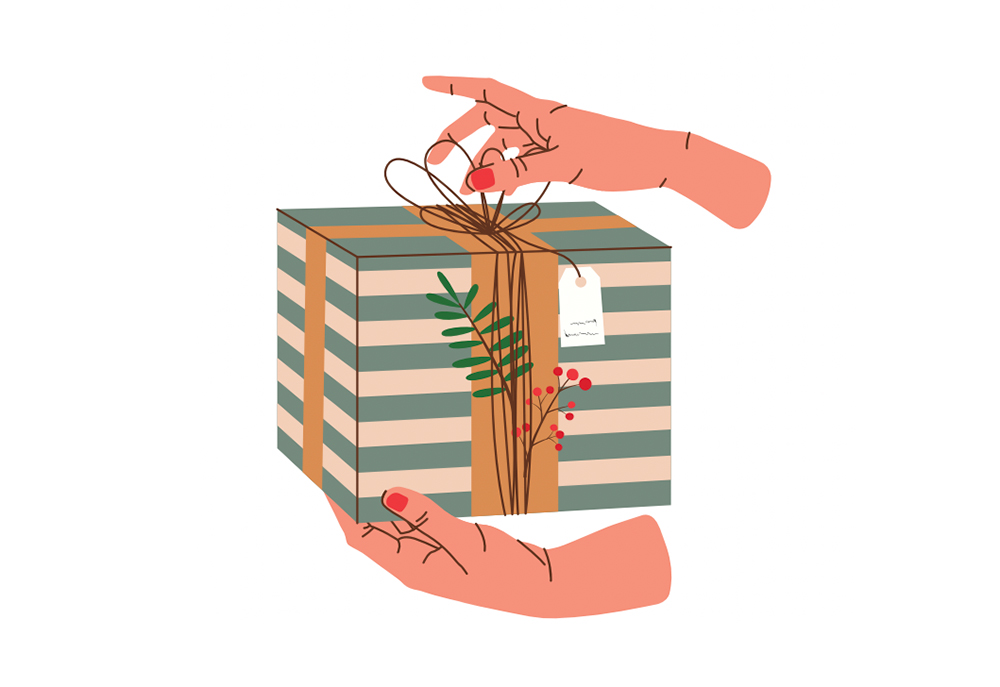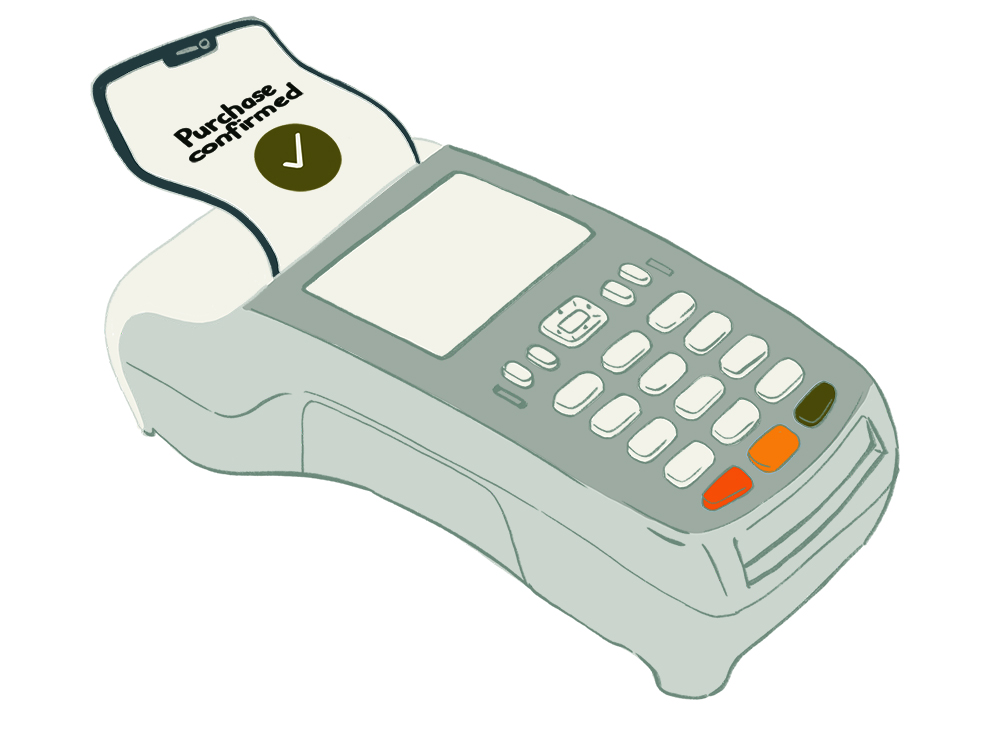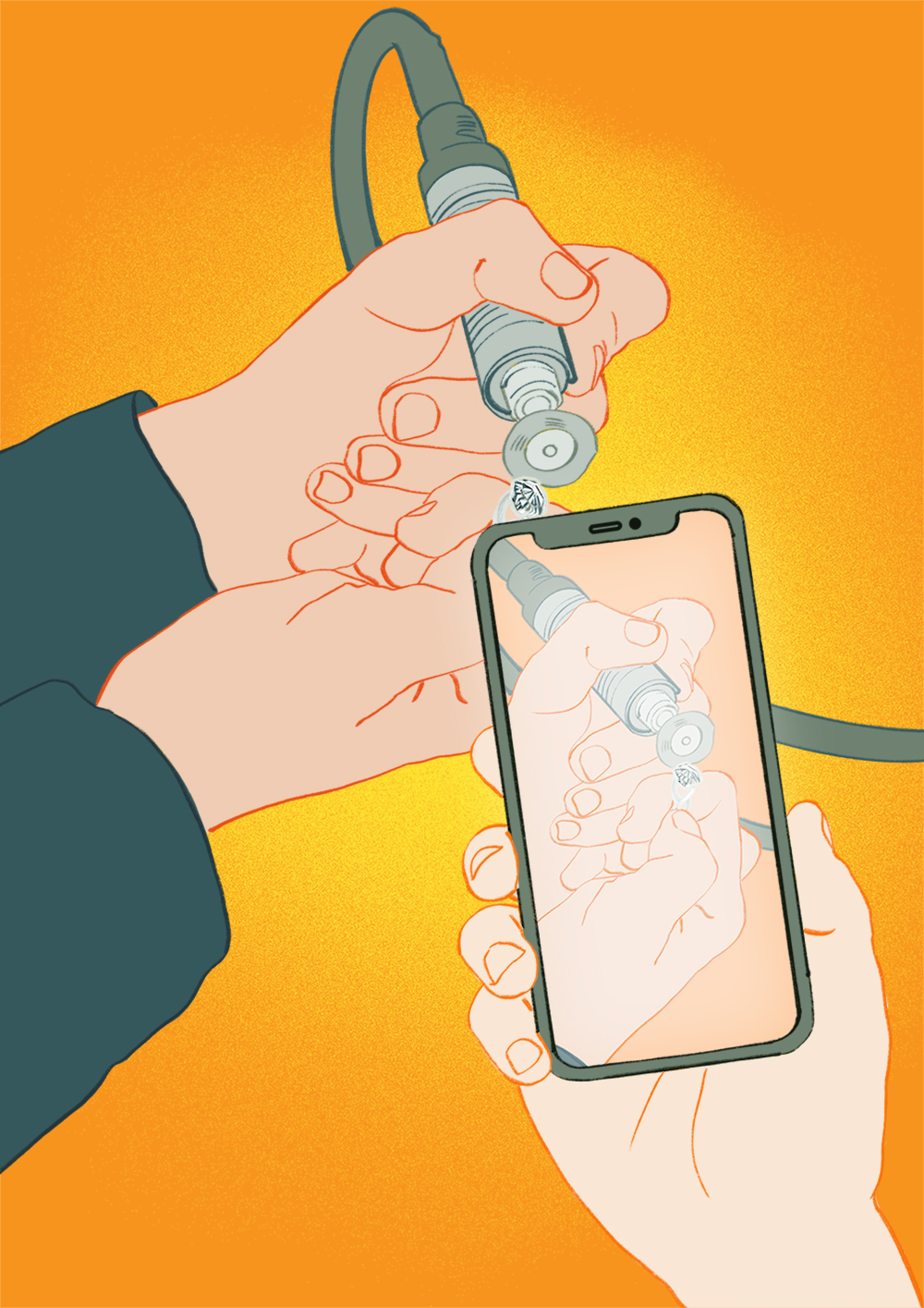THERE ARE NO guarantees in life. But when it comes to selling jewelry, there’s a lot we can be pretty sure of. And although reading a magazine article is no substitute for hard-earned experience on the sales floor, we thought it might be helpful to put a bunch of those pretty sure things all in one place. If you’re new to the industry — and maybe even if you’re not so new — these 100 recommendations drawn from INSTORE’s years of collected wisdom should give you plenty to focus on and practice until they’re second nature. Go forth and dazzle clients and colleagues alike!

1. Keep the “sweet spot” covered at all times. Per jewelry sales expert and longtime INSTORE columnist Shane Decker, that’s 10 to 15 feet inside the front door, to the customer’s right. Someone always needs to be there, to greet anyone entering within five seconds.
2. Smile. People buy jewelry for happy occasions. They want to buy it from happy people.
3. Make everyone feel welcome. Every jeweler has a story about the guy in ratty overalls who dropped $15,000 on a ring — after walking out of the first store he visited, because they were snooty to him.
4. Avoid stale opening lines. “Can I help you find anything?” is just asking to be waved off, as is “Anything in particular you’re looking for?” Phrases like that make you sound like a salesperson, when you want to be an engaging person to look at jewelry with. Try an open-ended question that isn’t about business, whether it’s small talk (“How was traffic getting here?”) or a little more personal (“What are you up to today?”), as long as you ask with genuine interest.
5. Practice getting past brush-offs like “I’m just looking” by validating the customer and turning the brush-off into a question: “That’s great — please look all you want! So, what brought you in here to look?”
6. Introduce yourself. (You don’t need to ask the customer’s name until you’re further along; it can be a bit off-putting when they’ve just walked in.)
7. Ask if they’d like something to drink.
Advertisement
8. Offer to clean their rings while they browse.
9. Offer to throw away their trash — if they walk in carrying a cup or wrapper, or when they finish the soda you offered them. It’s a simple thing, but people appreciate being relieved of the responsibility so much.
10. Address both partners when waiting on a couple. Nobody likes feeling invisible.
11. Avoid making assumptions. “You’re so cute together!” is awkward when it turns out the bride is scoping out rings with her brother.
12. Keep your political, religious, and other potentially controversial opinions to yourself.
13. Compliment customers’ jewelry and other fashion choices. If something they’re wearing strikes you, mention it! Everyone likes to have their taste validated by a professional.
14. Master the “ask-listen-paraphrase” technique. Get information by asking your customer questions and then actively listening. Don’t be focused on what you’re going to say as soon as they stop talking. What words are they using? What feelings are they expressing? When it is your turn to speak, repeat what they said back to them to make sure you understand.
15. Let the customer do most of the talking. It’s easy for salespeople to get carried away with themselves — you want to show the customer how much you know, and talking feels like doing something. But you gain valuable insight and give clients time to think when you step back and listen.

16. Ask open-ended questions to get them talking. These usually start with “what,” “how,” or “why.”
17. Carry a notebook or tablet and take notes as you’re listening to customers.
18. Avoid asking how much they want to spend. It’s a good way to instantly rule out something they’d otherwise be willing to buy. They’ll feel guilty for going over the arbitrary number they gave you, and that puts a damper on the excitement.
19. Sit down for bridal sales. Even if bridal isn’t your store’s bread-and-butter, the “quest for the ring” is a special occasion for the couple. Always treat it as such.
20. Have champagne on hand to celebrate your bridal customers’ upcoming nuptials.
21. Show the most expensive item first. People often buy the first thing they look at.
22. Talk about emotions, not preferences or price. Less “If she likes rose gold, she’ll like this,” more “What do you think her expression will be when she opens the box?”
23. Take jewelry out of the case when talking about it.
24. Step out from behind the counter if it feels right to do so. Some clients want to maintain their personal space, but others will feel more comfortable without a barrier between you.
25. Share stories about the jewelry you’re showing. Even if it’s just a funny anecdote about the designer, stories linger in the mind and create a sense of connection.
26. Use plain language rather than jewelry jargon. Don’t assume customers don’t know the difference between a carat and a karat — but don’t assume they do, either. Standard industry terms like baguette, emerald cut, and melee can sound like Greek to non-jewelers, and leave them feeling embarrassed when they walk out. So if you say something like channel set, quickly point out what that means, and leave them feeling informed instead.

27. Say “Let’s see how it looks on you!” or “Can I see it on you?” This is the fairy godmother part of your job! It should be fun for everyone.

28. Take a picture of it on them. Then email or text it to them. Particularly if there’s a good chance they’re going to shop around elsewhere before deciding, this is a must. They’ll have a pic to remind them of the jewelry (and of you), and you’ve also deftly gotten their contact info.
29. Let them know when a piece is part of a set.
30. Return jewelry to the case before taking out another piece. Only one or (possibly) two pieces out at a time, max, if you don’t want to give your insurer apoplexy.
31. Stay with your customer. As soon as you flit off, the person who was just browsing will want you to take something out and be stuck waiting.
32. If the customer wants space, remain visible and available without hovering.

33. Practice team selling. When sales associates cooperate, you can save sales that would otherwise have been lost — and the whole store wins. Become seamless at assisting each other by bringing out stock from the safe room, turning over sales when the first associate isn’t jibing with the customer, and stepping in when your area of expertise is needed.
34. On that note, recognize when you and a customer aren’t connecting, and turn them over to a better-suited colleague without hesitation. Life is too short, and your energy is better spent on customers who mesh with your vibe.
35. When another salesperson enters the picture, introduce them right away and explain why they’re there — and then fill them in on the customer’s needs.
36. Stay out of other salespeople’s interactions with customers unless you’re invited over. Maybe you waited on them last week and want to know why they’re working with Carol today. But you and Carol can sort it out after they’re gone.

37. Refrain from complaining, gossip, or shop talk when a customer might hear you.

38. Show your customer something ridiculously expensive, just for fun. You’re not trying to sell it (although, sure, sometimes it happens) — it’s just, how often do they get to try on a $20,000 necklace? You’re creating an experience, one your customer will remember.
39. Let customers look through the loupe or microscope too.
40. Distribute a wishlist to every shopper. Even if they’re “just looking,” it’s better for them to leave a record of their favorite pieces with you — just in case.
41. Familiarize yourself with a variety of closing techniques, from the direct close (“Do it”) to the reassurance close (“She’s going to be smiling for a week when she sees this”), and figure out which ones work best for you.
Advertisement
42. Wait for the customer to let you know they’re done buying. It’s surprisingly easy to get so excited about closing a sale that you rush them to the checkout when they’d like to keep looking.
43. That said, take yes for an answer. When a customer has decided on something, stop showing them other options.
44. Try selling an add-on every time — they’re in the store and in the mood to buy. (Rule of thumb: An add-on shouldn’t cost more than half what the main purchase does. You don’t want to overshadow it.)
45. Stand by your prices. There are times it makes sense to negotiate or offer a discount, but cutting into your profit simply to close the sale is a dangerous precedent to set.
46. Face your bills in the same direction when making change for cash purchases. The people who care will notice if you don’t.
47. Hand out literature at the point of sale. Whether it’s an invitation to your next trunk show or trivia about the birthstone for the month, it’s one more chance to make an impression.

48. Offer to gift-wrap purchases.
49. Inquire about upcoming events the customer might need a gift for.
50. Collect email addresses and other contact info.
51. Validate parking when someone makes a purchase.
52. Walk customers out after making a sale.
53. Give them your business card.
54. Ask them to tell their friends about you.
55. Record your notes after making a sale. This is the key to building long, trusted relationships.
56. Send a thank-you note. Handwritten is still the way.
57. But for other communications and updates, feel free to text with customers who prefer that over phone calls or email — and many do.

58. Use email for receipts, order forms, approvals, and other such documentation, however.
59. Exercise discretion when you follow up. Every jeweler also has a story about the time they called to ask Mrs. Jones how she was liking her new bracelet. But Mr. Jones didn’t buy the bracelet for Mrs. Jones.

60. Proactively reach out to clients with gift suggestions ahead of birthdays, anniversaries, and holidays like Valentine’s Day, Mother’s Day, and Father’s Day.
61. Whenever you place a special order, set reminders to check on its progress and keep the customer up to date on its status.
62. Install a door counter to track how many people come in every day, so you have an approximate sense of your prospects and closing rate.
63. Set up a phone charging station near the front of the store with cables for Android and Apple devices. Customers will appreciate it, and you’ve given them a reason to linger and look.
64. Post the network name and password for your wi-fi where customers can see it.
65. Do a lap with Windex and wipe down cases and mirrors whenever you have a minute, especially after a rush.
66. Replace burned-out lamps immediately. Light is your jewelry’s best friend.
67. Tidy up the restroom every time you use it, and check it hourly.
68. Keep your own food and drink off of the showroom floor.
69. Leave your phone on silent or at your workstation when you’re on the sales floor.
70. Set out disposable masks for shoppers who want them.

71. Keep crayons, paper, and candy on hand, even if kids rarely come in. When kids have a good time somewhere, they tell their parents to keep going there.
72. Along with a standard first-aid kit, have OTC pain relievers, burn ointment, and an Epi-Pen on hand for emergencies.
73. Maintain a stash of menstrual products in the restroom. If a customer does happen to need one, you’ll be a lifesaver in her book forever.
74. Check your email and voicemail at least twice a day, and respond to customers before you go home, even if it’s just to let them know you’ll get back to them with more information soon.
75. Respond to all of your online reviews — the positive and the negative — courteously and honestly.
76. Take a beat before responding to the negative reviews, and run your responses by somebody else before hitting submit.
77. Use the U.S. Postal Service’s Registered Mail when shipping something that absolutely must not get lost or stolen. UPS and FedEx are faster but less secure.

78. Take photos when taking in a repair, get clear information about what is to be done — and then repeat it back to the customer before letting them go.
79. Check all prongs and settings before returning a piece of jewelry to the customer, even if all you did was clean it.
80. Examine every repair with the customer before handing it off to them, to ensure the work has been done to their satisfaction.
81. When a customer picks up a repair, again, check to see if there’s anything coming up they might need a gift for. Don’t waste those opportunities to set up future sales.
82. Readily refer shoppers to your competitors for products and services you don’t or can’t provide. It shows that you’re knowledgeable, secure, and willing to put the customer’s needs first.
Advertisement
83. Reorder your fast sellers without delay. Neglecting to restock is the lamest reason to lose a sale.
84. Keep plenty of loose diamonds on hand, including large stones. Jewelers who don’t stock large stones don’t sell large stones.
85. Devote at least an hour each week to sales training, including roleplaying with other sales associates.
86. Continually broaden your product knowledge. Take online courses, research the gems you sell, and scour materials from suppliers. In a world where so much jewelry is bought and sold online, your in-person expertise is a major differentiator when customers are figuring out where to shop.
87. Set goals. Make them SMART (Specific, Measurable, Achievable, Relevant, and Time-Bound) and as easy or challenging as you want. But set them, so that you have a way to track your progress and achievements as a salesperson.

88. Wear the jewelry you sell. If you don’t love wearing it, how can you persuade someone else to?
89. Sell the jewelry you wear. If someone says she wants your earrings, let her know you can make that happen.
90. Keep your nails trimmed, use lotion, and invest in regular manicures. Customers spend a nonzero amount of time looking at your hands.
91. Close the store with at least one other person. Closing alone is dangerous for you, and also for the business.
92. Double-check that the alarm is set.
93. Build relationships with other local businesses. Explore service organizations, business associations, and the chamber of commerce. The larger your network, the more opportunities you have.
94. Underpromise and overdeliver. Giving yourself a buffer builds trust with your customers, because they learn they can count on what you tell them.
95. Educate. Jewelry isn’t just shiny rocks and metals — it’s science, engineering, history, and art. Seeing it through those lenses can inspire interest (and sales) among people who rarely wear it.
96. Tell the truth. An independent small business is nothing without its reputation and integrity.
97. Communicate. When something goes wrong — and something will — let your customer know, so they can regroup accordingly. People tend to be understanding about mishaps and mistakes, even big ones. But they’re much less forgiving about attempts to cover things up.
98. Maintain your sense of perspective. You’re selling jewelry, not operating a nuclear power plant.
99. Remember that the customer’s experience is actually more important than the product. The product is part of the experience, but what will keep them coming back is how good you made them feel. This is great news, because you have a lot of control over that.

100. Read INSTORE cover to cover each month — because if there’s one thing you can definitely be sure of, it’s that there’s always more to learn about selling jewelry.